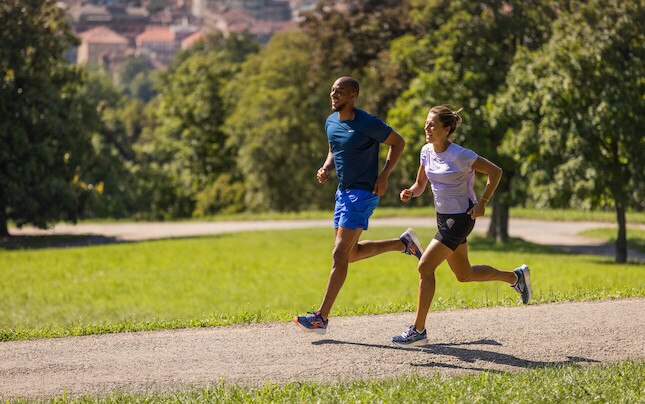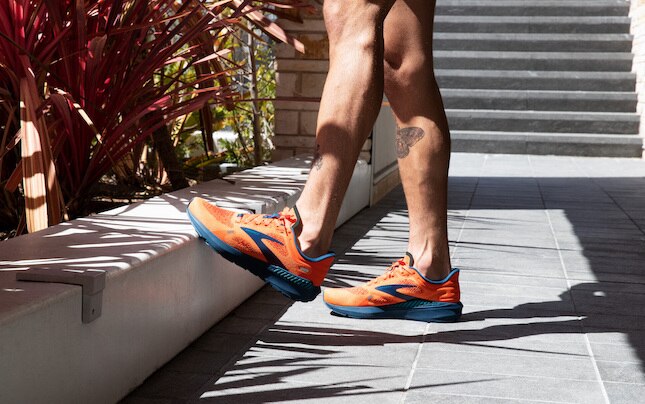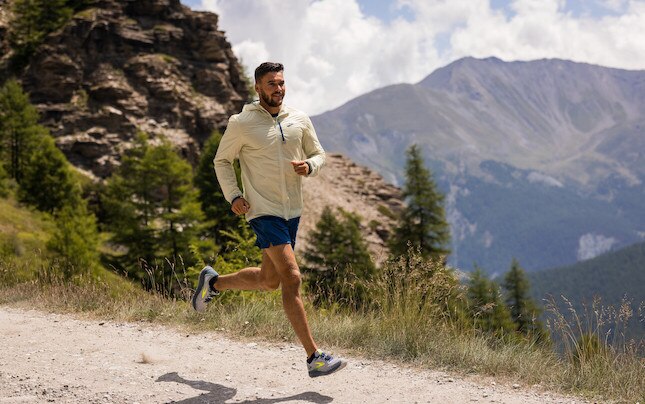The running gear you need to get started

Welcome to the world of running. If you're new or have just been out of the game for a bit, you may be getting acquainted with what's necessary for a smooth, comfortable run. Here are our recommendations to get you started on the right foot.
People are always saying running is the most affordable sport, because all you need to do is lace up and go. In theory, this isn't wrong, but each piece of clothing and every accessory can make or break your desire to continue, or worse, lead to injury.
Here's the running gear you'll need to support healthy, happy runs well into the future.
Shoes
The first task is lacing up, of course, but know that just any old shoe won't do. Your running shoes need to be made for just that, and even in a running store, you'll have to navigate whether you need stability or neutral shoes, as well as appropriate heel drops and cushioning.
It's OK if you're not sure about these options. Start with the Brooks Shoe Finder to get some personalized recommendations, then it's a good idea to be properly fitted at a running store. Running store staff can even look at the wear pattern on your shoes to help identify if you pronate or supinate. Form and gait can change, so it's possible that while you were once a heel striker, you may now run on the outer edge of your shoes.

Socks
When it comes to socks, synthetic is best. Cotton socks will leave your feet sweaty, which can cause blisters. It's best to wear fabric that can wick away moisture. On a hot/rainy/long run, you'll notice the difference, and so will your poor toes. Cushioning can also impact your run, and some people find that they do better without it. Many do like getting a nice hug from their socks, whether that's from a compression sock that goes up their leg, or the kind that you barely see.
Tops and bottoms
Just like socks, synthetic is best when it comes to your clothing. Lightweight, moisture-wicking shirts, shorts, and leggings will keep you cool and prevent buns and other parts from feeling swampy. Nobody likes chafing, and quality workout gear that fits can save your skin.
Also, depending on what time of day you plan to run, reflective gear can be important. The Brooks Run Visible collection offers high visibility for dim or dark runs with 3M™ Scotchlite™ Carbon Black Stretch reflectivity.
In the warmer months, you'll probably want thinner material that doesn't cling to you, such as a singlet or a pair of shorts. When it's colder, consider putting the shorts away and reaching for some tights that will help keep the heat in and the moisture out.
Outerwear
Outerwear can be tricky, because it is highly dependent on the weather and whether or not you run hot or cold. A good rule, however, is to dress for the weather to be warmer than it actually is. That's because you will warm up once you get moving. With that said, a lightweight jacket — or even two solid layers, perhaps a long sleeve and some sort of windbreaker — can get you through a winter run over 40°. That windbreaker can also get you through a crisp fall morning or spring showers. It is also typical for sporty outerwear to come in neutral colours like black, so keep in mind visibility and reflective technology.

Underwear
This category is highly individual. Some people may find that they prefer to run without underwear. It can be easy when many pairs of shorts have an inner liner that makes you feel secure. Also, if the material compresses, it can provide more comfort. This is another category where you should shy away from cotton because chafing on your nether regions might get you more than the typical thigh chafing. That includes along your bra line if you're not in a quality running bra — one that is high impact can protect your chest and back.
Accessories
There are so many running accessories to choose from, but you can keep it simple starting out. Most people use a pair of headphones for music or audiobooks — whichever is your thing — as well as a running watch or some sort of smartwatch that can track your workout. A quality pair of sunglasses and a hat can also get you through rainy and sunny days. Again, the goal is to be as close to comfort as possible, and how can you feel comfortable if you're being pelted with raindrops or blinded by the sun?
These are all just the beginning. It is safe to assume that you'll need more than just a pair of good sneakers to get out there and be successful. However, it is a good place to start. Over time, you'll discover a desire to build upon your running gear and be in the best gear you can afford. One thing that will always be free, though, is a good runner's high. So get out there!
Our writer's advice is intended for informational or general educational purposes only. We always encourage you to speak with your physician or healthcare provider before making any adjustments to your running, nutrition, or fitness routines.
